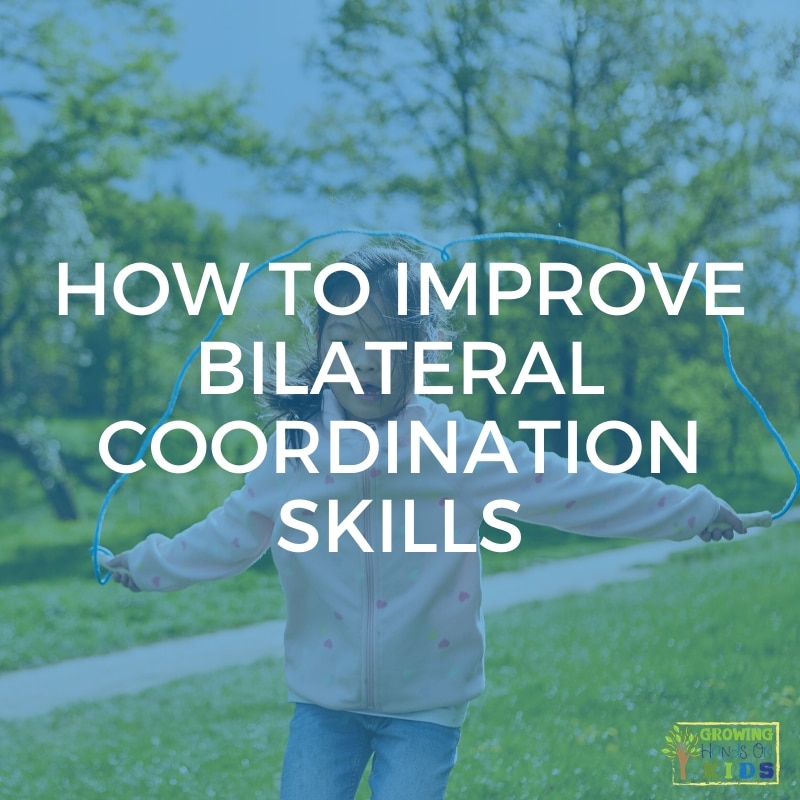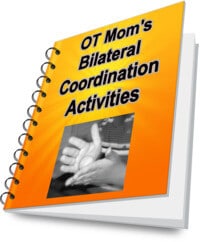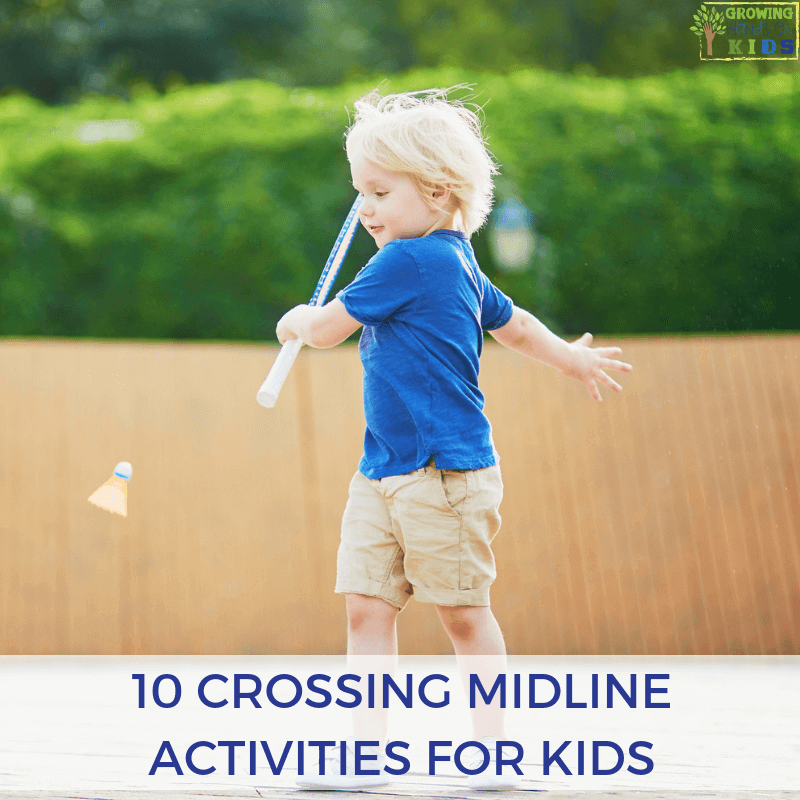Improving Bilateral Coordination Skills for Kids
Affiliate and Referral links are used below to promote products I love and recommend. I receive a commission on any purchases made through these links. Please see my disclosure policy for more details. As an Amazon Associate, I earn from qualifying purchases.
Bilateral coordination skills are important in your child's development, especially when it comes to handwriting, scissor skills, and other fine motor activities. The ability to coordinate both sides of their bodies together in order to complete activities is very important.
What is Bilateral Coordination?
Bilateral coordination skills include being able to use both sides of the body together in coordinated movements.
Crossing midline skills and body awareness are an important part of bilateral coordination. When all of these work together and the movements are organized and controlled, this is often referred to as bilateral integration.
Children who struggle with bilateral coordination skills can struggle with many every-day activities such as getting dressed, tying their shoes, fine motor activities such as stringing beads or buttoning, drawing, writing, cutting, catching a ball or throwing, and crawling, walking, climbing stairs, or riding a bike.
7 Activities to Improve Bilateral Coordination Skills in Kids
- Stencils: make sure they hold the stencil with one hand while tracing with the other hand.
- Hand clapping games
- Lacing activities: lacing cards, lace-up stockings (two pieces of construction paper with holes punched around the edges).
- Liter tube: cut off the bottom of 2, two-liter bottles. Stuff the bottles with crumpled colored paper. Use clear packing tape to connect the wide ends of the bottle together. Hand the child hold “handles” with both hands. Toss crumpled paper or softball for the child to hit with the liter tube.
- Games to help promote this skill include Bop It, Mr. Potato Head (make sure the child stabilizes the head with one hand while placing body parts with the other hand), Rubik's cube, Etch-A-Sketch, rhythm sticks, Legos.
- Play Four Square: make sure the child uses both hands to bounce the ball.
- Ball and balloon games: have the child use both hands to pass the ball or balloon overhead, between legs, roll at a target, etc.
Want More Ideas for Bilateral Coordination??
Check out the OT Mom's Bilateral Coordination Activities ebook for even more ideas and reasons to improve bilateral coordination from a pediatric Occupational Therapist.
I also have a board on Pinterest specifically for bilateral coordination skills so you can find many more ideas there.
You May Also Like:

Heather Greutman, COTA
Heather Greutman is a Certified Occupational Therapy Assistant with experience in school-based OT services for preschool through high school. She uses her background to share child development tips, tools, and strategies for parents, educators, and therapists. She is the author of many ebooks including The Basics of Fine Motor Skills, and Basics of Pre-Writing Skills, and co-author of Sensory Processing Explained: A Handbook for Parents and Educators.




Thank you for the ideas! I am an OTA student working on my level 2 fieldwork in a peds outpatient clinic. It is challenging to come up with new ideas to help my kiddos and keep them engaged. I appreciate the tips you post on your board!!!
Michelle